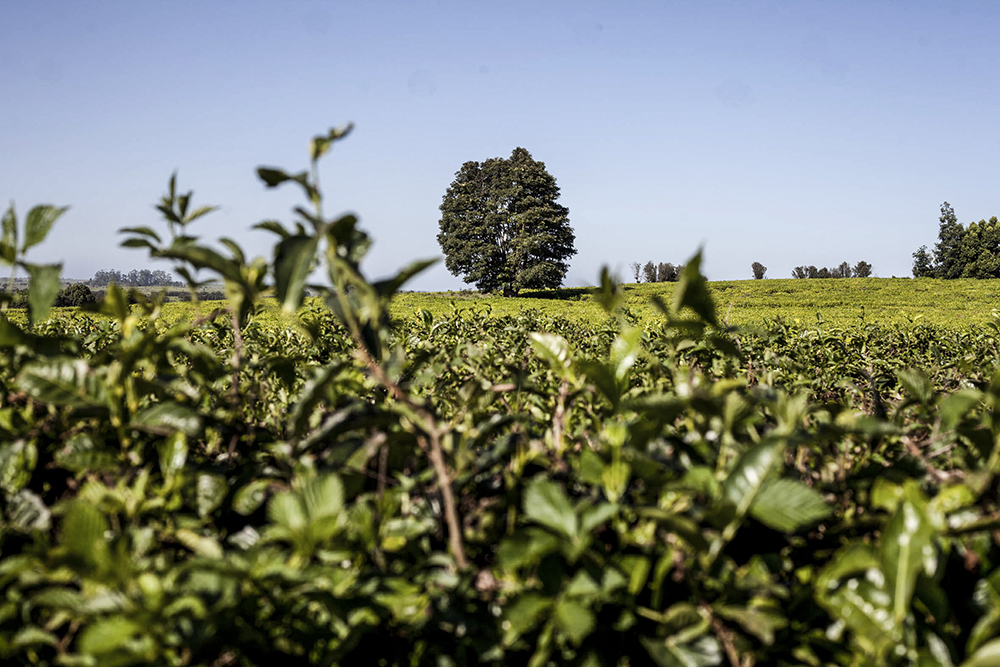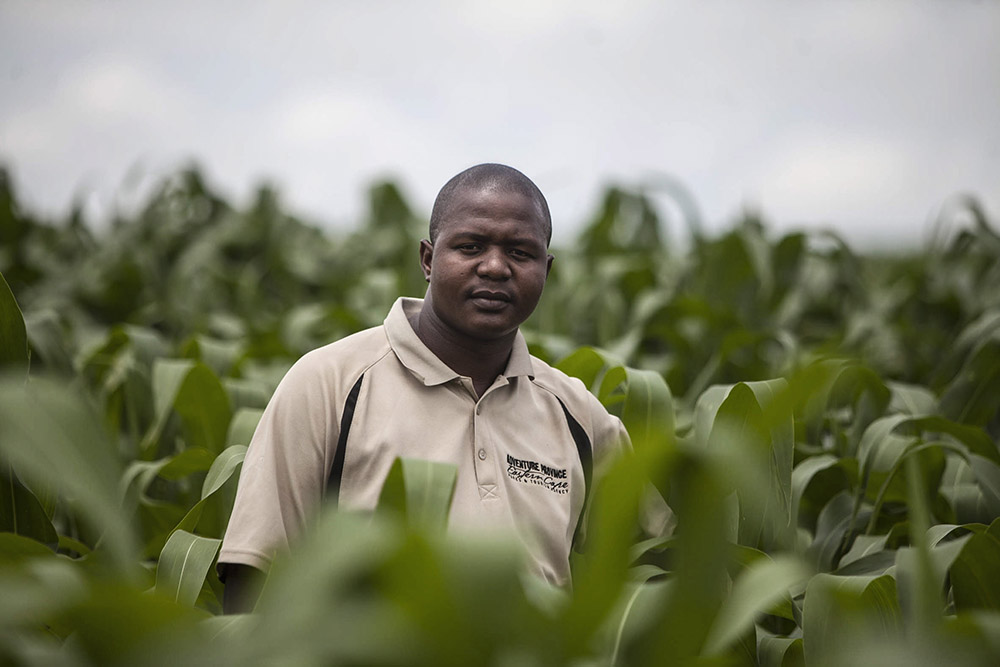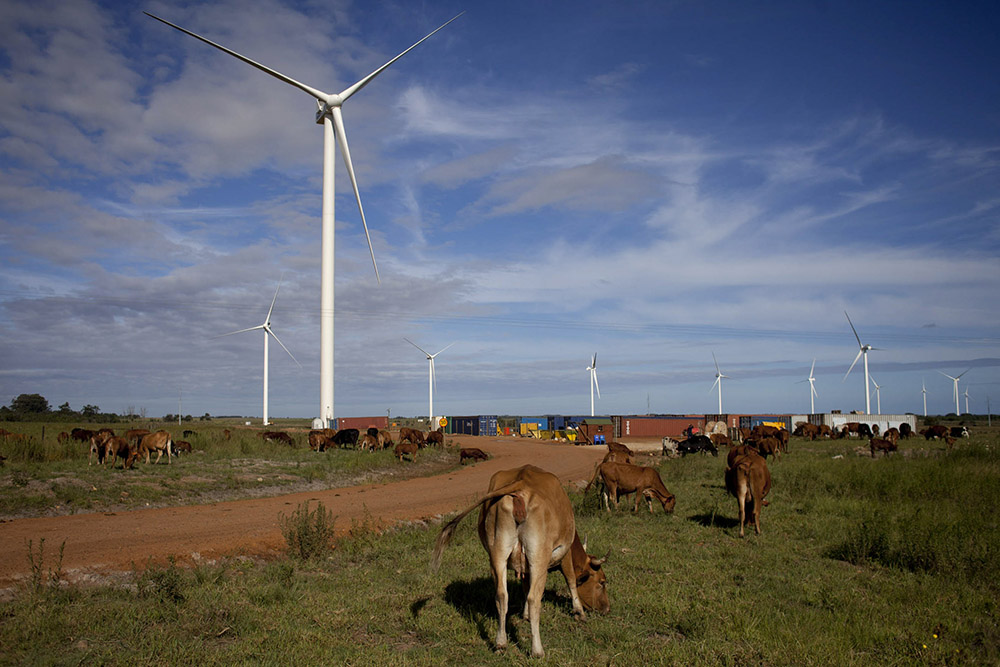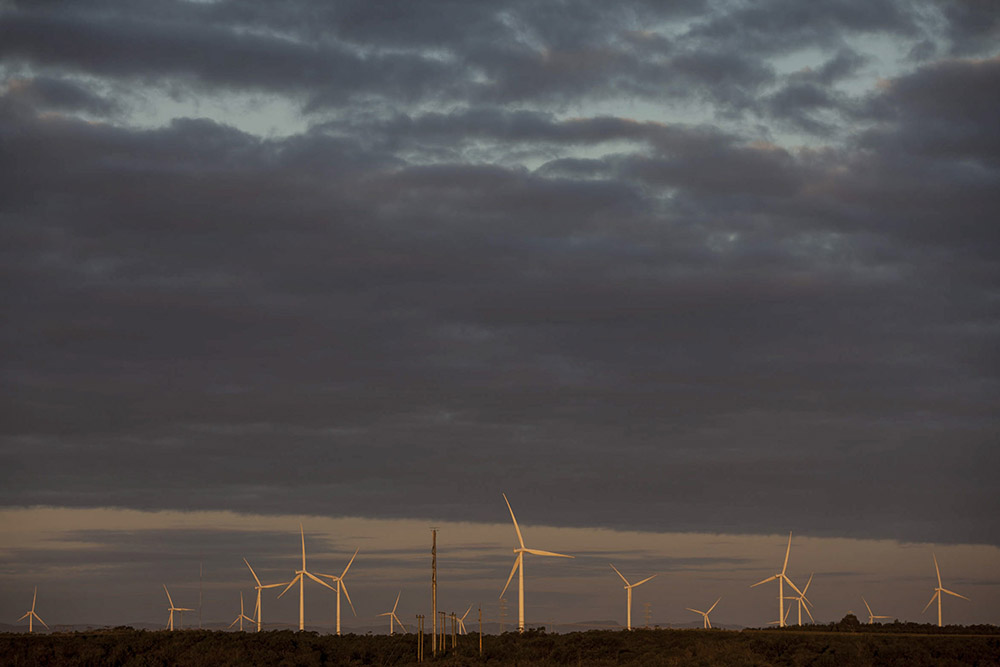It was once one of the largest tea producers in the southern hemisphere. Today, the Magwa Tea Estate is a ghost farm.
In Lambasi, a village in the Eastern Cape that is also known as Magwa, the 2 800-hectare tea estate is a riot of unkempt tea leaves, buffered by the eerie silence of empty labourers’ quarters.
The dairy and calf-raising facility is nearly submerged in shrubbery.
Next to the tea estate, another farm lies derelict: the grazing land is overgrown with bush and its vandalised buildings filled with cow dung. The farm’s giant mill now stores a few bags of fertiliser belonging to the Magwa communal property association (CPA).
In 2006 the Lambasi CPA, made up of 668 households, won a land restitution settlement for a 12 215-hectare piece of land in this part of the former Transkei, located near Lusikisiki.
In South Africa land reform can take one of three forms – restitution, land tenure reform and redistribution. The claimant families know Lambasi CPA won a restitution claim but because they were resident on the land, a development package was included for the land they occupied that would see the land restored to its former commercial use.
A decade later, they still have not received the title deeds for the land, and about R40?million in development and compensation grants has not been distributed to the CPA.
Aside from the Magwa Tea Estate’s 2 800 hectares, the remaining 9 415 hectares had previously been used by Transkei Agricultural Corporation (Tracor), a parastatal entity. But Tracor allegedly mismanaged the estate and, by 1998, the Eastern Cape Development Corporation liquidated the estate, bailing it out to the tune of R34?million. The estate’s fortunes have continued to wax and wane since then.
Some members of the claimant families and others have, under the moniker of the Lambasi Development Committee, started to use virgin parts of the land for small-scale farming.
“Our attitude now has been to do what we can,” says Nhlanhla Shibe, the Lambasi CPA’s acting chairperson and a member of the Lambasi Development Committee.
“Last year [on a 900-hectare piece of land], we harvested about 50 tonnes of sugar beans and maize meal combined and that was through an investment by AngloGold [Ashanti].”

Magwa was once known for its tea plantations. (Photos: Oupa Nkosi, M&G)
But there had been even greater plans to develop the land.
“We, as the CPA, have discussed possible developments with various companies,” says retired CPA chairperson Pheli Mnyaka.
“Our settlement agreement [of about R67?million] included use of the tea estate and we had already had long discussions with Astrum Energy [a renewable energy company, about renting part of the land]. There was supposed to be an agreement [from the government] on how things were to run with the tea estate, but we were never given guidelines on how anything was to run.”
Astrum began talks with the Lambasi CPA in 2013. Florian Kroeber, managing director at Astrum Energy, says the project stalled because the CPA members are land claimants who are supposed to have access to their land, but don’t.
“Every contract has to be co-signed by the department of rural development and land reform, and they are just not forthcoming with any documents,” he says. “And these poor people have been given the impression that they are land claimants and are the owners.”
Kroeber speculates that the government – in this case, the provincial department of rural development and land reform – may feel that communal property associations “are not experienced enough in business and shouldn’t be run over by reckless businessmen, but then the department is so disorganised that they don’t pitch up to meetings”.
The Eastern Cape, one of the country’s poorest and most underdeveloped provinces, has secured a substantial portion of South Africa’s wind power allocation so far, with 16 wind farms out of a total of 31 nationally.
Former homelands represent about 40% of the Eastern Cape’s land mass and 60% of its population. But most wind farms in the province are situated in two areas, with five each around Jeffrey’s Bay and Cookhouse. This is largely due to the ongoing problems and delays in securing lease agreements in the former homelands.
According to project design documents from the energy department, rental earnings for one turbine can reach up to R100?000 a year and turbines do not occupy large tracts of a property. Developers also upgrade and maintain the farmers’ roads, which enhances property values.
As Astrum’s Kroeber puts it, this creates a paradigm where the rich get even richer. Farmers and farming communities on privately owned land receive a disproportionate amount of the development spin-offs arising from these projects. The former homelands such as the Transkei remain with failed ghost projects from the apartheid era.

Nhlanhla Shibe of the Lambasi Development Committee on land the committee has started planting for itself.
Shibe, the Lambasi CPA’s incumbent head, views the conundrum as a triple-headed beast of ward councillors, traditional leaders and CPAs.
Lambasi comprises seven villages, divided into three wards with, at the moment, one recognised chief. “So there are three councillors and one chief – and all these people have competing interests,” he says.
Shibe is standing outside the community hall. Besides homesteads and gravel roads, the hall is the only bureaucratic building to be seen in this part of Lambasi.
In contrast to Shibe’s round features and quietly-spoken demeanour, the recently retired CPA head Mnyaka is a stern-looking businessperson who earns a pension. He lives in Port St Johns, from where he oversees his business ventures.
Mnyaka says traditional leaders with the ability to mobilise and lobby can often thwart communal consensus on an issue. “The headmen have a real problem with CPAs because they see them as tools of their disempowerment.”
CPAs were land-holding institutions introduced in 1996 under the CPA Act, and enabled groups to organise themselves into legal bodies to receive title deeds from restitution or redistribution programmes.
Cases of CPAs waiting years for their title deeds are not uncommon. The Communal Land Rights Act of 2004, which was struck down by the Constitutional Court in 2010, contained a clause that enabled the minister to transfer title deeds to the “community” – effectively, to the traditional council.
Nowadays, government appears to be trying to phase out these communal property associations as an option for land ownership.
An example is the Enon and Bersheba community, which forms one of 23 rural areas spread across four provinces governed by the Certain Rural Areas Act of 1998. Residents are still locked in a stalemate with the land reform department over the transfer of title deeds.
Following one land claim process, a referendum conducted by the Independent Electoral Commission took place in Bersheba in 2011 to establish the form of ownership residents preferred: a trust, a communal property association or a municipality.
“People chose the communal property association [CPA],” says community member Mxolisi Matomela. “The process that was supposed to follow after that was the registration of the CPA and the transfer of the land. The CPA has been registered, but the department … is ducking and diving [as to] when the land is supposed to be transferred.”

Tsitsikamma Community Wind Farm on the Garden Route is one of the few turbine projects on communal land.
Ruth Hall, of the Institute for Poverty, Land and Agrarian Studies at the University of the Western Cape, writes that since 2011 the “proactive land acquisition strategy has become the only route through which the state is redistributing land. This is now based on the state buying up land and retaining ownership of it, leasing rather than transferring it to beneficiaries.”
According to her paper, “Eligibility is broad and unclear, yet a new insistence on ‘production discipline’ suggests that those with the resources to continue commercial farming operations will be prioritised, and that the state will evict its beneficiary tenants unable to do so.”
The land acquisition strategy, she states, “gives far-reaching discretionary powers to officials of the renamed and redefined department to purchase land directly, rather than disburse grants to enable beneficiaries to buy land for themselves.
“Officials may determine which land should be acquired by the state, whether it should be transferred or leased and, if so, to whom and on what terms. A key feature of the strategy is the provision of state land on leasehold, ostensibly on a trial basis pending an assessment that could pave the way towards a later ‘second’ transfer of ownership to beneficiaries.”
Bahlekile Keikelame, of the Eastern Cape’s department of rural development and land reform, says that in the former homelands most land is unregistered state land. “Some of those properties have what you call quitrent titles, which was more like a lease issued to black people then. You find that title is now in the fourth generation, so it’s a process to get that title upgraded to a full title.”
A piece of land needs to be surveyed and registered by the state before a business proposal is brought to a provincial committee. The committee can then recommend that the minister give a long-term lease on the land, providing that the people occupying it are aware of the development and of the revenue due to them.
“We as provincial departments can’t help these delays because we have to comply with a checklist,” says Keikelame.
The Magwa issue, she says, is one of intradepartmental inefficiencies and that there is a backlog affecting many claimants in the province. She says she has neither received a request to provide title deeds to the Lambasi CPA nor a surveyed land diagram from those handling the land restitution claim.
It is difficult to issue title deeds for unregistered state land when its exact extent is unknown, Keikelame added. “Land descriptions tend to be vague, but the restitution department know that they have to make it a priority to get these properties surveyed.”
According to Lambasi headman Mthuthuzeli Mkwedini, the CPAs do not have powers superseding the tribal authority. “CPAs are in rural areas and therefore cannot call autonomous meetings or take autonomous decisions.”
Wind turbine projects promise change
You can see the colossal wind turbines, with their slow-turning blades, from the N2 highway. These sentinels from a science fiction utopia overlook the sleepy seaside town of Jeffrey’s Bay.
The 60 turbines, spread over 3?700 hectares, make up the Eastern Cape town’s wind farm, supplying 460 000MWh a year – enough to keep the lights on in more than 100 000 average households.
But in South Africa there is more to renewable energy projects than electricity: it’s about jobs too. The department of energy has determined that 3 725MW generated from renewable energy is required to ensure an uninterrupted supply of electricity. The renewable energy independent power producer procurement programme is designed to contribute not only to that target but towards stimulating socioeconomic growth in the communities surrounding the wind farms.
According to the programme’s policy documents, individual projects have to allocate between 0.7% and 1.5% of their total project revenue to socioeconomic development projects and up to 0.7% of their revenue to enterprise development, the latter being voluntary.
For project developers, a key consideration has been finding creative ways to spend this allocation. “Creative” can mean different things at different times, but what developers won’t say outright is that it involves having as little as possible to do with local government or local-level politicians, who can complicate and perhaps dictate how they spend the development money.
The Jeffrey’s Bay wind farm is owned by Globeleq South Africa, which has two solar power plants in De Aar and Droogfontein in the Northern Cape.
“We have R20?million a year to spend on our social programmes and our enterprise programmes [on all three plants], so we decided we would put 40% of that into this skills programme,” explains Globeleq chief executive Mark Pickering. The rest is spent on projects such as a reading coach programme, a mother-and-child clinic and a recycling initiative.

The Jeffrey’s Bay wind farm recruits and trains engineering students in the specialised field of mechatronics, but the owners avoid getting involved in local politics.
The company recruits students, drawing primarily from the Cape Peninsula University of Technology and the Tshwane University of Technology, as part of a concerted push to seed the nascent local wind turbine industry with the mechatronics engineering experts it requires.
Ten of these students are selected for internships at the company’s various plants, with two of them making it to the Jeffreys Bay wind farm.
Dzudzanani Muelelwa has recently completed her internship at the wind farm. The Thohoyandou-born Muelelwa says the training she has received covers wind farm, substation and electrical maintenance as well as health and safety regulations.
“You also learn about relations between management companies and the farmers,” she says.
The Jeffrey’s Bay wind farm stretches out over several farms and the company needs to maintain good working relations with all of them.
Muelelwa considers the internship to be a good introduction to mechatronics. But it did not meet her expectations as far as the servicing of wind turbines is concerned. “You don’t learn about the turbines because they are being maintained and serviced by Siemens,” she says.
According to Pickering, the industry will need to produce about 200 wind turbine technicians to meet its wind energy needs once all the bidding rounds in the renewable energy independent power producer procurement programme are complete.
The Kouga wind farm, a R2?billion, 32-turbine operation stretching over six farms in Kouga in the Eastern Cape, injects about 300GWh into the national power grid. The farm puts 1.08% of its revenues towards socioeconomic projects focusing on education and health, but it declined to provide exact figures.
Many renewable energy projects choose to direct their social investment spend in this way to avoid having to deal with local government structures.
At Sea Vista, which is 10km away from the farm, this has meant an investment in appliances, as well as repairs to the roof, windows, kitchen and serving area, for the Sandwater Primary School. Also, the company bought 900 books for the local library and installed a jungle gym in an outside play area.
At the nearby St Francis Hospice, the company fixed the air conditioner and bought the facility a pair of Ford EcoSport vehicles (which retail for R250 000 each) as well as a year’s supply of adult nappies.
Wendy Parsons, the Kouga wind farm’s chief financial officer, declined to give exact figures of social spend, but said community involvement was key in identifying projects such as those the company was running in the Sea Vista area.
“Our view is that the community and the municipality will be in the area long after the wind farm is gone and these projects will need municipal support, as they will have to maintain these projects later.
“We have found it a lot easier to invest that money in infrastructural projects where the communities can see what is going on, as opposed to taking that money and splitting it through [nonprofits], which is what some other companies do.”
Parsons said it was not so much a case of companies trying to avoid contact with municipalities but rather not knowing the right people to contact, inferring that municipalities should be more proactive in contacting independent power producers.
The Jeffrey’s Bay wind farm also opts for ground-level support, helping a small-scale tenant farmer near Hankey and supporting a cattle breeding programme intended to make farmers more competitive through better stock.
But these programmes are haphazard and their scale is limited.
A researcher and consultant who has studied renewable energy projects but asked to remain anonymous, says the department of energy is trying to establish a monitoring system that measures their effect. At the moment, the department collects data through the quarterly reports submitted by the power producers.
“No feedback is given by government and, as such, the numbers mean nothing. These are purely monetary evaluations and they are not qualitative.”
The researcher says it is not that companies are not trying to spend the money: it is where they are spending it that is a weakness, and that reflects negatively on the policy. “Local government is excluded by default in the policy, which means that there is no obligation to inform local government on socioeconomic development. It is up to the companies to be proactive,” the researcher said, adding that the South African Local Government Association, an autonomous association of municipalities, has been working to formalise working groups between energy producers and municipalities.
There are conscious efforts, the researcher says, to avoid political interference in such processes.
This story was co-produced with SciDev.Net as part of a science journalism skills development project funded by the Wellcome Trust.